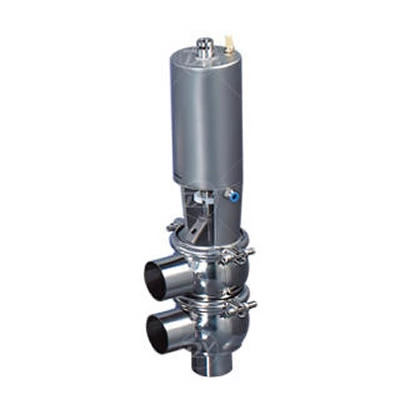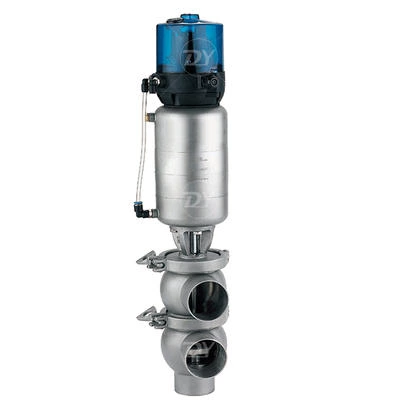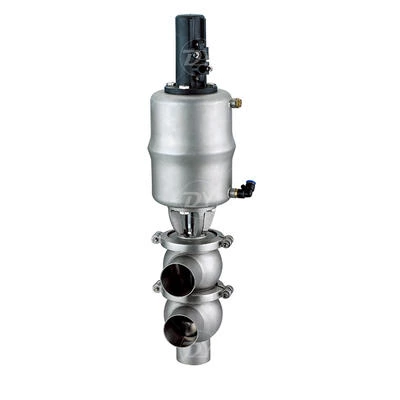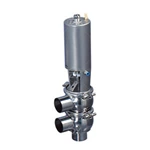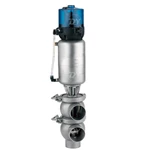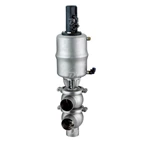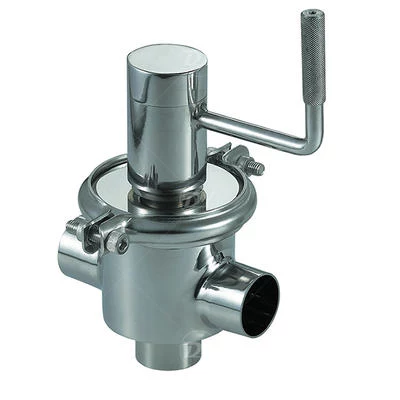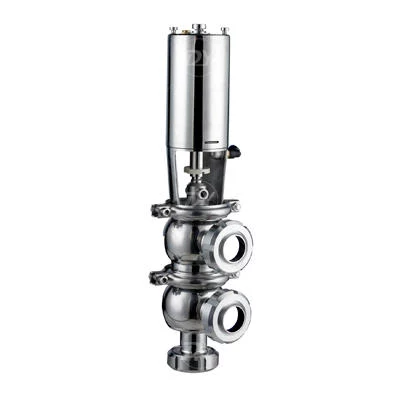Sanitary SS Pneumatic Actuated Divert Valve
Application:
The single seat divert valve is a hygienic pneumatically operated valve used for flow diversion in the food, beverage and pharmaceutical processing industry.
Features:
- Made in SS316L / wetted surfaces
- Few moving parts, contributing to high reliability and low maintenance.
- Easy cleaning
- Seat gasket replacement in less than 7 minutes without removing the valve from the line and no tools required.
- Repairable actuator
Materials:
- Product wetted steel parts: AISI 316L (internal Ra < 0.8 μm)
- Other parts in stainless Steel: AISI 304
- Plug gasket: EPDM
- Other product wetted seals EPDM (standard)
Technical specifications:
- Max working pressure: 145 psi (10 bar).
- Min. working pressure: Full vacuum.
- Working temperature: 248°F (EPDM)
Working principle:
Seat valves are operated by a single-acting, double-acting pneumatic actuator or manual handle. The compressed air is applied to the actuator and the shaft is moved to place the valve in the "open" or "closed" position.
Single seat divert valves have one seal for each switching position separating the particular pipelines from one another. The single seat divert valves are not recommended for separating incompatible fluids.
Recommended inlet:
 Flow Capacity:
Flow Capacity:
The flow coefficient Cv is the volume (in US gallons) of water at 60 °F that will flow per minute through a valve with a pressure drop of 1 psi across the valve.
| position 1 | position 2 |
| VALVE SIZE | CV | VALVE SIZE | CV | |
| 1 1/2" | 24 | 1 1/2" | 35 | |
| 2" | 54 | 2" | 70 | |
| 3" | 139 | 3" | 190 |
For other pressure drops than 1 psi the flow can be calculated with the following formula:
Q= Cv x √ ∆p
Where:
Q = Flow in GPM
Cv = Flow coefficient.
∆p = Pressure drop in psi over the valve.
Example:
1 1/2" valve has a Cv= 35 GPM with a pressure drop of 1 psi.
For a pressure drop of 2 psi which is the flow?
Q= 35 X √2 = 49 GPM.
Fluids other than water, please consult us.
